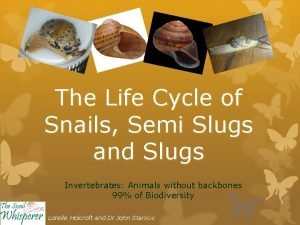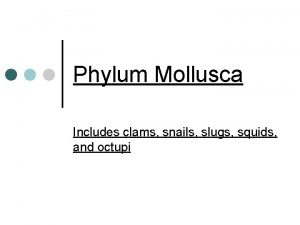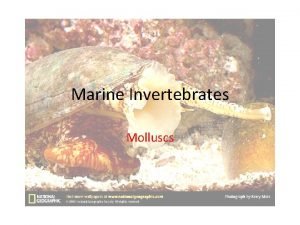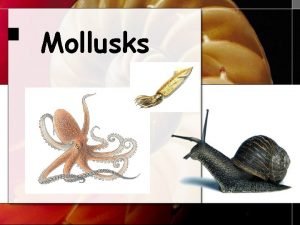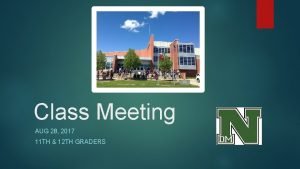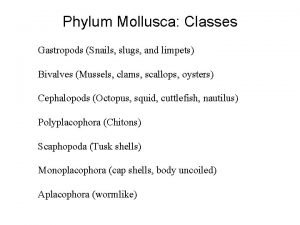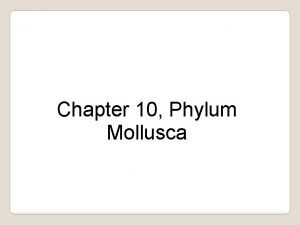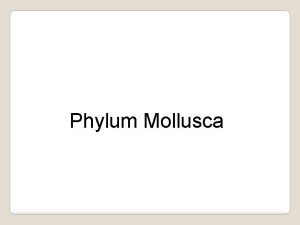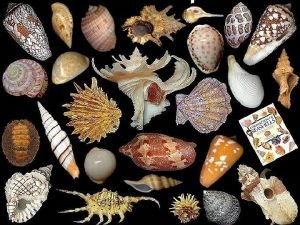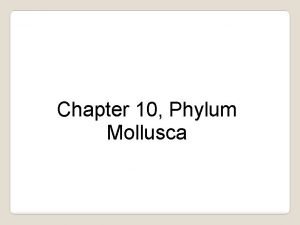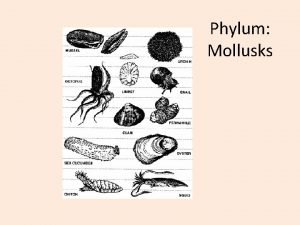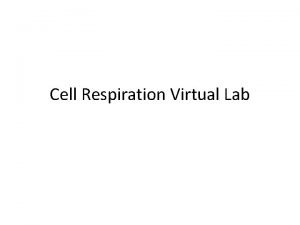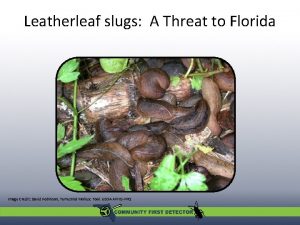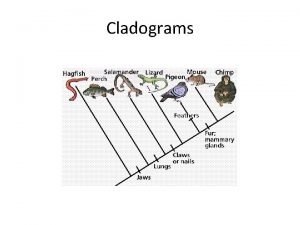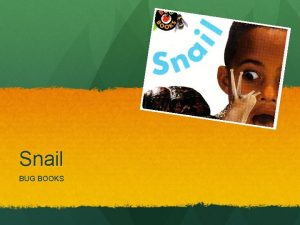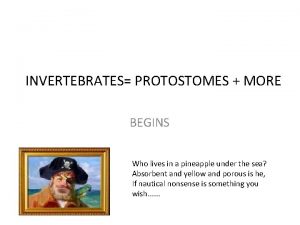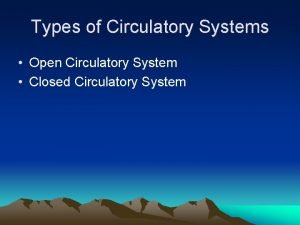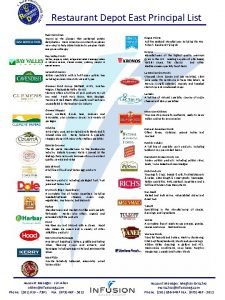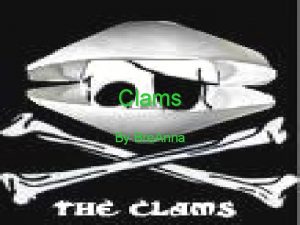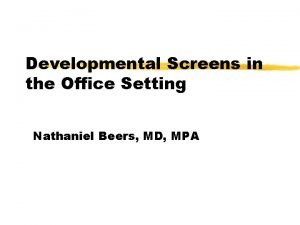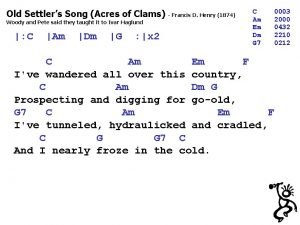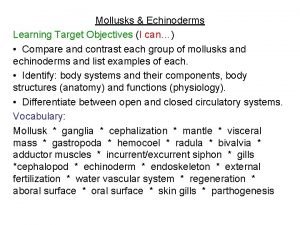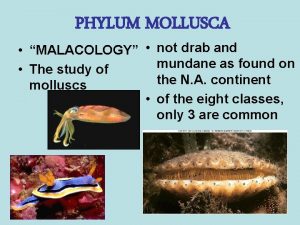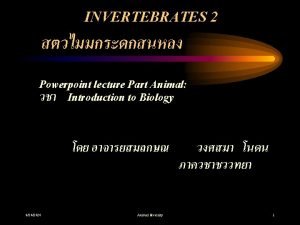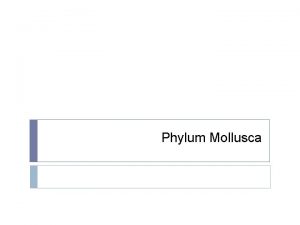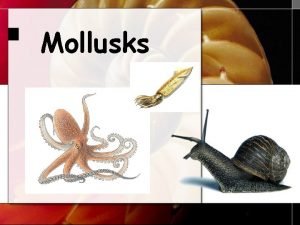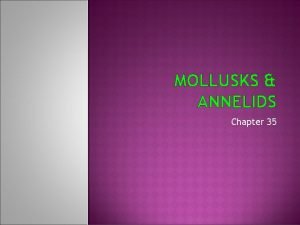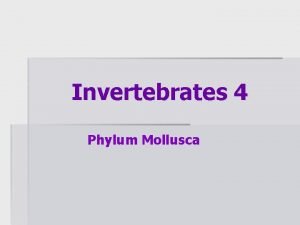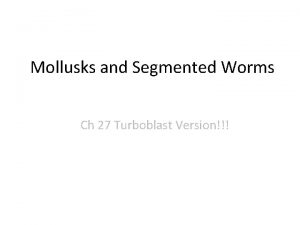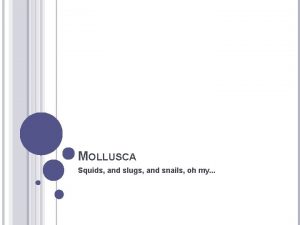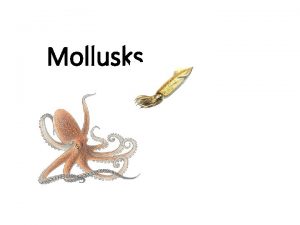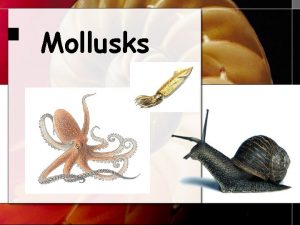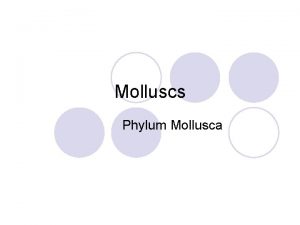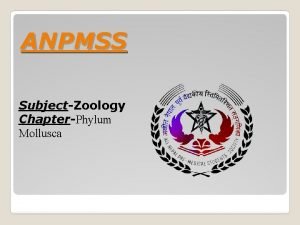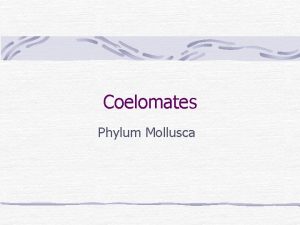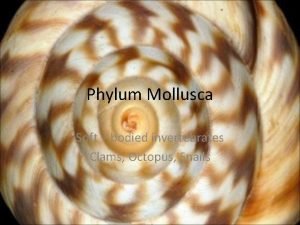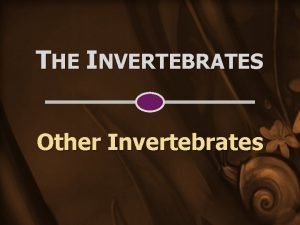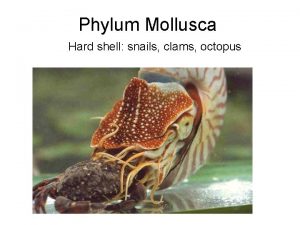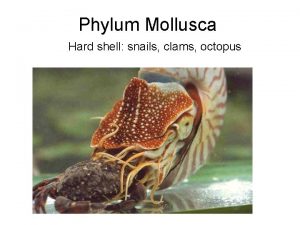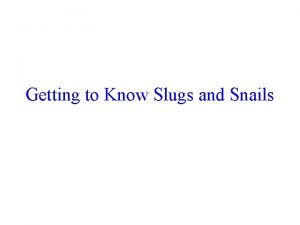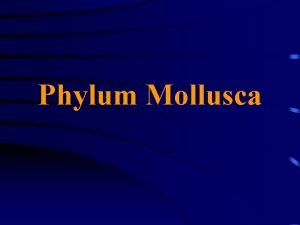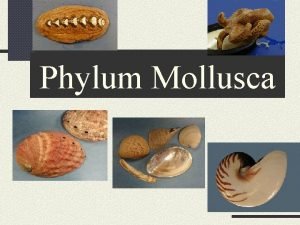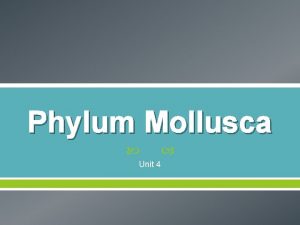Phylum Mollusca Includes clams snails slugs squids and
































- Slides: 32

Phylum Mollusca Includes clams, snails, slugs, squids, and octupi

Characteristics ¢ Soft bodied ¢ Many secrete an external shell, some internal ¢ Coelomate body ¢ Trocophore larva – larval stage of development that swim and feed with cilia and have a mouth and anus ¢ Bilateral symmetry

Advantages of a coelom l allows for organ systems like circulatory and digestive l allows more efficient processing of materials and more complex interactions with the environment l Muscles of body wall are separated from those of the gut and can contract without interfering with digestion

Body Plan ¢ Divided into two main regions: head-foot and visceral mass l Head-foot consists of head with mouth and sensory structures and the foot that is large and muscular for locomotion l Visceral mass contains all vital organs

Coelom surrounds the heart ¢ Mantle- layer of epidermis covering the visceral mass ¢ Shell- calcium carbonate protective structure secreted by the mantle; ¢ Can be disadvantage because it decreases space available for gas exchange ¢

¢ Gills- thin, membranous respiratory organs that consist of blood vessels for efficient gas exchange ¢ Mantle cavity- space between the mantle and the visceral mass ¢ Ganglia- paired clusters of nerve cells in head foot and visceral mass; ¢ coordinate muscle movement and sensory input for response to light, touch and chemicals

¢ Radula- flexible, tongue-like tissue covered with teeth used for cutting or scraping food

Three Mollusk Classes Class External shell Head Radula Locomotion Gastropoda One (most) Yes Crawling (most) Bivalva Two No No Sessile (most) Yes Swim rapidly Cephala- None poda (most)

Class Gastopoda Largest and most diverse class ¢ Includes snails, abalones, conchs, nudibranchs and slugs ¢ Torsion- visceral mass twists during larval stage bringing mantle cavity, gills and anus to the front; ¢ Head can withdraw into mantle cavity when threatened ¢

¢ Nudibranchs – ruffles/projections increase surface area for gas exchange through skin

Conch Shell and Abalone

¢ Gastropods have an open circulatory system ¢ Hemolymph- circulatory fluid that does not remain in vessels because it is collected from gills or lungs, ¢ Hemocoel- fluid filled spaces in the tissues known as blood cavities

Other Characteristics ¢ Snails have two eyes on tentacles ¢ One or no shell ¢ Most aquatic gastropods respire with gills, ¢ Terrestrial gastropods respire by using the mantle cavity as a modified lung ¢ Terrestrial snails seal off with mucus plug in dry weather

Class Bivalva ¢ Clams, oysters, scallops, mussels ¢ 2 part hinged shell ¢ Adductor musclesclose shells tightly by contracting; open when relaxed

Clams burrow in sand or mud ¢ Have siphons ¢ Cilia on gills send water in through incurrent siphon and out through excurrent siphon l Gills trap nutrients in water passing them to the mouth while also exchanging gases with hemolymph l

¢ Fertilization in separate sexes of marine clams occurs externally as gametes are shed into the water ¢ Fertilization in freshwater clams occurs between separate sexes internally; larva may parasitize fish gills

Glochidia packages

Endangered/Imperiled bivalves Decrease in population of Alabama bivalves because: 1. Habitat destruction (need free flowing water) 2. Pollution 3. Exotic species outcompete native species for resources (Zebra mussel) 4. Commercial exploitation 5. Dams flood habitat ¢

Other Characteristics Oysters attach to surfaces to filter feed ¢ Scallops move by opening and closing valves ¢ Some have glochidia – special mantle in clams that looks like a fish, used to capture prey ¢

Class Cephalopoda ¢ Octopuses ¢ squids ¢ cuttlefishes ¢ chambered nautiluses

¢ Free swimming predators; use suction cups on tentacles to capture prey ¢ Kill and eat prey with radula/ or “beak” that is jawlike ¢ Most advanced nervous system with complex eyes; possible learning

Closed circulatory system allows for more efficient delivery of nutrients and gas exchange ¢ No trocophore stage (Egg --> juvenile) ¢ Separate sexes with internal fertilization; male delivers sperm to mantle cavity of female for fertilization ¢ l Females lay eggs and guard them until they hatch

¢ Many release ink to confuse predators ¢ Chromatophores- pigment cells on outer mantle that allow for communication and camouflage ¢ Swim by jet propulsion or crawling

Different Body Plans ¢ Squids have 10 tentacles, octopi have 8 ¢ Giant squid could be up to 60 feet octopi could be up to 30 ft ¢ Squids and cuttlefish have small internal shells; chambered nautilus has external

Nautilus and Octopus

Giant Squid

Unique Examples ¢ Blue- ringed octopus in Australia weighs about 1 ounce yet has enough venom to kill 10 people

Octopus Camouflage

What is it?

Indonesian Mimic Octopus

What is it?

¢ Squid is considered to be a delicacy and is referred to as kalamari
 Life cycle of slugs
Life cycle of slugs Invertebrates including snails slugs and mussels
Invertebrates including snails slugs and mussels Invertebrates including snails slugs and mussels
Invertebrates including snails slugs and mussels Snail phylum
Snail phylum Phylum mollusca homework and study guide #1
Phylum mollusca homework and study guide #1 Classes of phylum mollusca
Classes of phylum mollusca Mollusk characteristics
Mollusk characteristics Characteristics of phylum mollusca
Characteristics of phylum mollusca Ciri ciri polyplacophora
Ciri ciri polyplacophora Characteristics of phylum mollusca
Characteristics of phylum mollusca General characteristics of phylum mollusca
General characteristics of phylum mollusca Four classes of mollusks
Four classes of mollusks Snails and elodea virtual lab
Snails and elodea virtual lab Leatherleaf slugs
Leatherleaf slugs Catfish backbone
Catfish backbone Weasel food web
Weasel food web Mystery snail slime
Mystery snail slime Are snails bugs
Are snails bugs Are porifera protostomes
Are porifera protostomes Clam open circulatory system
Clam open circulatory system Restaurant depot italian ice
Restaurant depot italian ice Razor clam life cycle
Razor clam life cycle Shellfish market forms
Shellfish market forms Cat/clams scoring sheet
Cat/clams scoring sheet Old settlers song
Old settlers song Clam
Clam Buccal bulb
Buccal bulb Cephalopod phylum
Cephalopod phylum How do mollusks reproduce
How do mollusks reproduce Oysters phylum
Oysters phylum Gastropods
Gastropods Brachiozoa
Brachiozoa Segmentation in mollusca
Segmentation in mollusca
